Mizuna: The best leafy green you can grow this winter
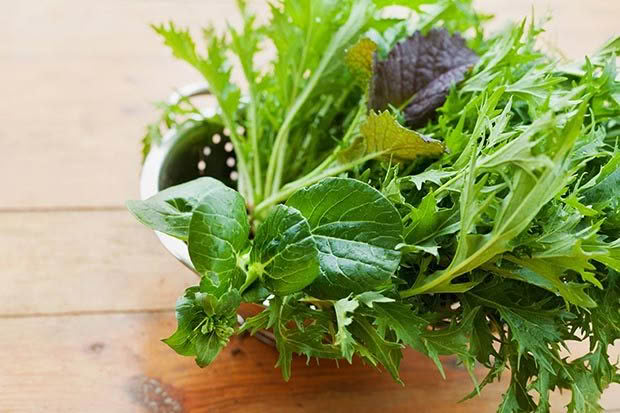
If you are missing summer’s salad greens, this is the plant for you.
Words: Jenny Somervell
If you have ever opened a packet of mescalin greens from the supermarket, chances are you have come across the bright green, finely-dissected leaves of mizuna (pronounced meezuna).
For years I dismissed this winter green, considering it a second-rate filler. I was wrong.
It is one of the most useful and fastest-growing salad plants, growing virtually anywhere, anytime, tolerating heat, cold and wet soils. Anything except dry.
It is one of the few veges in our garden that grows faster than the weeds. New Zealand gardener and cook Mary Browne recommends growing mizuna for a continuous supply of delectable greens, and in our Canterbury winters, mizuna is our most reliable leafy green. Even in the coldest months, it continues to grow in our greenhouse, filling the gaps when our other leafy greens wane.
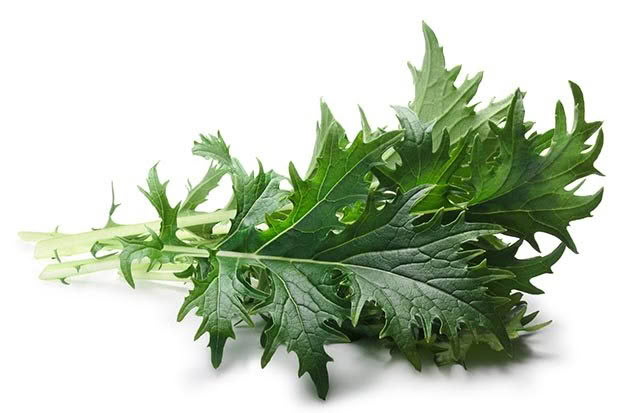
Bunch of Mizuna (Japanese mustard) leafy green salad.
The feathery leaves are a good lettuce substitute, or a crisp, tender adjunct to whatever salad ingredients are available. The flavour is mild, the texture juicy and crunchy. The dark, chorophyll-laden leaves contain minerals, beta-carotene, vitamin C, folate and iron.
Mizuna is both heat and cold-tolerant, happily surviving sub-zero temperatures and snow in our southern garden.
Even when sown in spring, it is one of the most bolt-resistant of the oriental brassicas.
In summer, the bushy clumps of glossy green, feathery leaves are surprisingly decorative interspersed among brightly-coloured annuals in a flower bed, as an edging, or dotted among other veges and herbs.
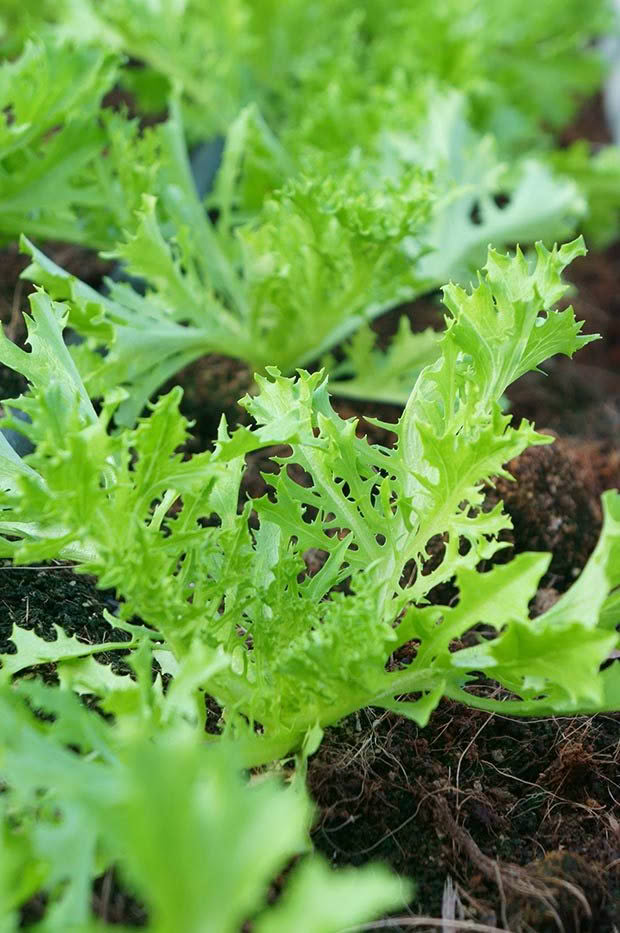
Unlike most cutting greens, mizuna retains its rosette shape and looks good, even with regular cutting.
Mizuna is actually a brassica (Brassica rapa subsp nipposinica), evolving from the primitive turnip. This may not sound promising, but the flavour and appearance bear little resemblance to turnips.
It’s probably Chinese in origin, but the best varieties have been developed in Japan where it is know as mizu-na (water/juicy vegetable) or kyo-na (Kyoto greens).
At least 16 varieties are known, including attractive red-leaved forms. Hybrid varieties are higher yielding with broader, less-serrated leaves. Clumps grow to about 23cm high and can spread to 45cm.
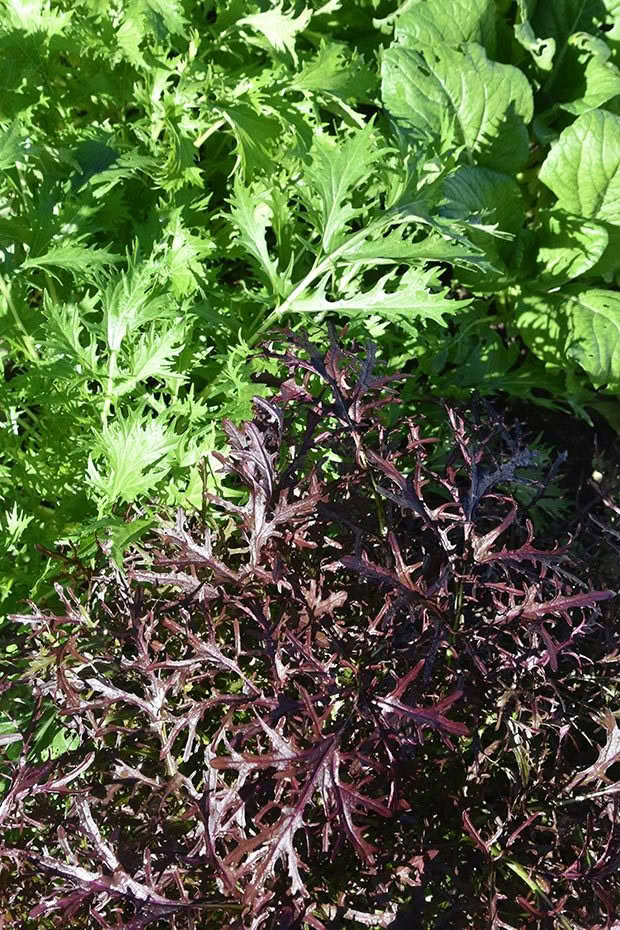
Red and green leafed mizuna.
HOW TO GROW MIZUNA
Mizuna prefers temperatures between 8-18˚C, making it ideal for growing in winter in an unheated greenhouse. It seems very tolerant of low light levels, growing longer than most vegetables.
Greenhouse sowings can be made in late autumn and early winter and eaten when young and tender or left to be a productive winter heading crop. Another sowing in late winter in containers can provide plants for planting outdoors in early spring.
In addition, seeds can be direct sown from spring through to autumn. Plants can be grown as fast baby-leaf crops for a quick one-off harvest, as a cut-and-come-again crop, or as mature plants for frequent leaf picking. We combine all three methods.
WHAT MIZUNA LIKES
Mizuna isn’t fussy. It tolerates a wide range of soil types, as long as they are fertile and moisture-retentive. Additional feeding is usually not needed if lots of organic matter is incorporated before sowing or planting.
I sow mizuna in rows and gradually thin sequentially, initially to 10cm apart, and then 20-45 cm apart, depending on how big we want our final plants to be. These first thinnings go straight into our salads – well-washed roots and all – and are succulent and tender. Sometimes I will also transplant a few elsewhere.
If transplants are used, it is best to either transplant when they are very small, or sow into modules. Any check in growth can result in plants quickly running to seed.
Seedlings will be ready to plant out in 2-3 weeks from sowing. Though mizuna is frost-tolerant, spring and autumn-sown plants in cooler climates will be faster growing and produce more tender greens under cloches.
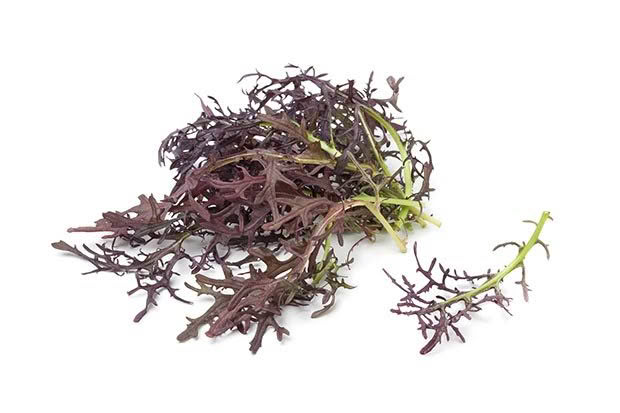
Purple mizuna.
Summer sowings, on the other hand, may benefit from light shade. If plants do not appear to be growing rapidly, a liquid feed with seaweed will boost them along nicely.
Plants need to be kept well watered, especially in hot weather. Healthy plants are seldom troubled by pests. To rejuvenate older plants, cut all the leaves to about 2-3cm above the ground, then liquid feed to boost new growth.
HOW TO USE MIZUNA
You can eat your first greens as soon as 16 days after sowing, and any stage of growth can be harvested from small seedlings to large plants.
The younger and smaller the leaves, the more tender to eat. The leaves make an attractive garnish and even the flowering shoots area can be eaten. Older leaves can be fibrous, especially if lacking water.
In the West, mizuna is popular as an off-season salad vegetable and the baby leaves have become common in mescalin.
In the East, mizuna is treated like other oriental greens, either steamed or stir-fried, alone or with other vegetables, meat, poultry or fish.
Traditionally it is cooked in soups, or pickled, or cooked in sukiyaki-like dishes. Stalk pieces are pickled and served as an appetiser or a piquant bite with a cold beer. We tried it stir-fried with mushrooms, onion and garlic. Delicious!
It would seem there is room in the West for more adventurous cooking with this versatile green. Our conclusion: when all other salad plants in the garden succumb – and you can count on it in winter – this stalwart of garden greens will not fail you.
MIZUNA’S RELATIVES: MIBUNA AND MISOME
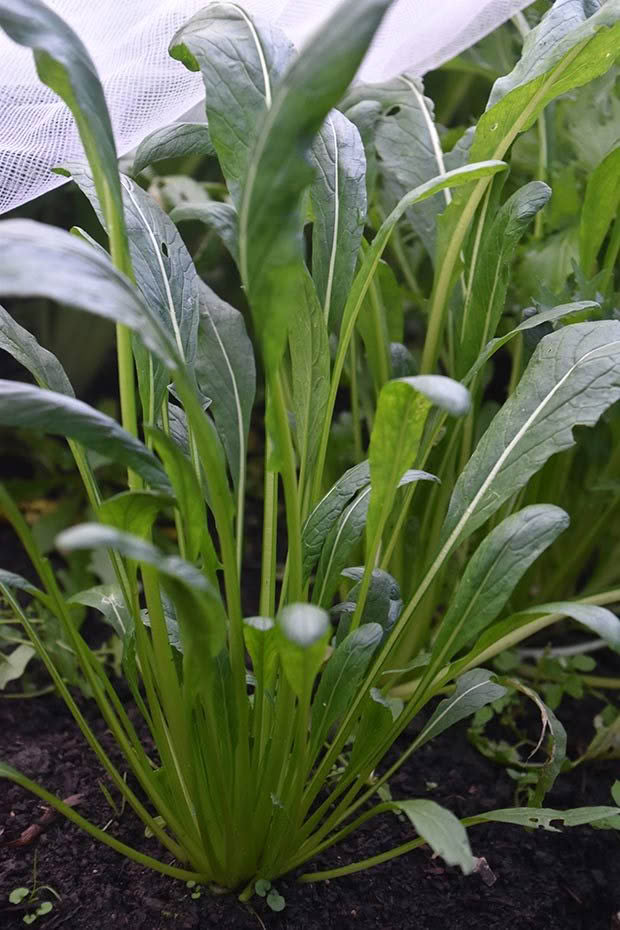
Mibuna variety Green Spray.
Mibuna or mibu-greens — Brassica rapa var japonica ‘Mibuna’: A more recent addition to the mizuna family is mibuna, also known as ‘mibu-greens’ after Mibu, the area in Kyoto where it has long been cultivated. Mibuna has long, strap-like leaves, often with a rounded tip. The attractive leaves cascade out like a fountain from a central rosette.
Like mizuna, the leaves are mild-flavoured, though the flavour is stronger and more distinct and develops with age. The leaves also get tougher as plants age.
While still a cold weather plant, mibuna is less adapted to extremes than mizuna and more likely to bolt from spring sowings. It seems to need slightly higher temperatures to germinate, and produces better results under cover in autumn. Mibuna can be used in the same ways as mizuna for winter and spring salads and as a stir-fried green.
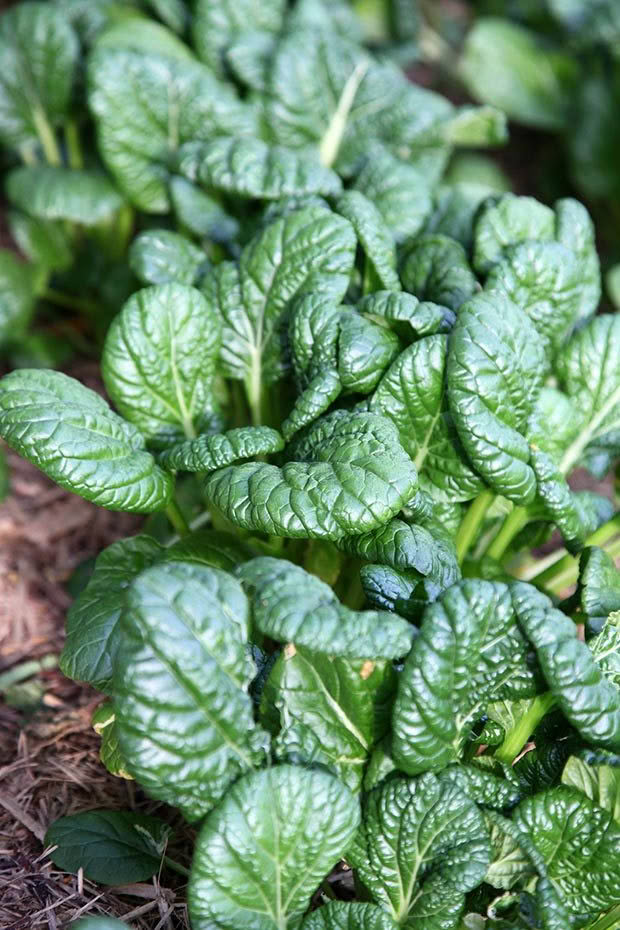
Misome.
Misome: Misome hybrids are a cross between another winter favourite Japanese komatsuna mustard (B rapa subsp. nipposinica var pervidis) and pak choi (B rapa subsp chinensis).
This new addition has a more upright habit and dark green, glossy, crinkly leaves. It will grow in any season and is suitable for stir-fries, salads and pickling.
The flavour is stronger than either mibuna or mizuna, however young leaves are still mild enough to add to salads.

11 TIPS FOR USING MIZUNA
1. Use mizuna in any recipes which call for mustard greens or cabbage.
2. Stalks and leaves should be separated – stalks need longerto cook.
3. Leaves cook very rapidly – just a pan off the heat may be sufficient. If cooked too long, greens will be limp and lifeless.
4. Use generously in cooking mizuna cooks down a lot, like spinach and silverbeet.
5.Try adding it as a pizza topping, toss into pasta, or blend into pesto.
6. Stir chopped, cleaned mizuna into risotto at the end of cooking– add mushrooms for a moreearthy flavour.
7. Toss mizuna into miso or any vegetable soup near the end of cooking.
8. Stir-fry with any vegetables using lots of garlic and ginger – cook larger vegetable pieces first, adding mizuna last and just wilt it, then serve.
9. Toss raw mizuna with quinoa, rice, barley or any grain for a fresh picnic-style salad, more delicious with lemon vinaigrette.
10. Mizuna goes well with apples, pears, peaches, figs, citrus, nuts, garlic, ginger, mushrooms, chillies, basil, mint and bacon.
11. Pickle stalk pieces Japanese-style by steeping in salt, sugar and rice vinegar for about 48 hours.
Love this story? Subscribe now!
 This article first appeared in NZ Lifestyle Block Magazine.
This article first appeared in NZ Lifestyle Block Magazine.
